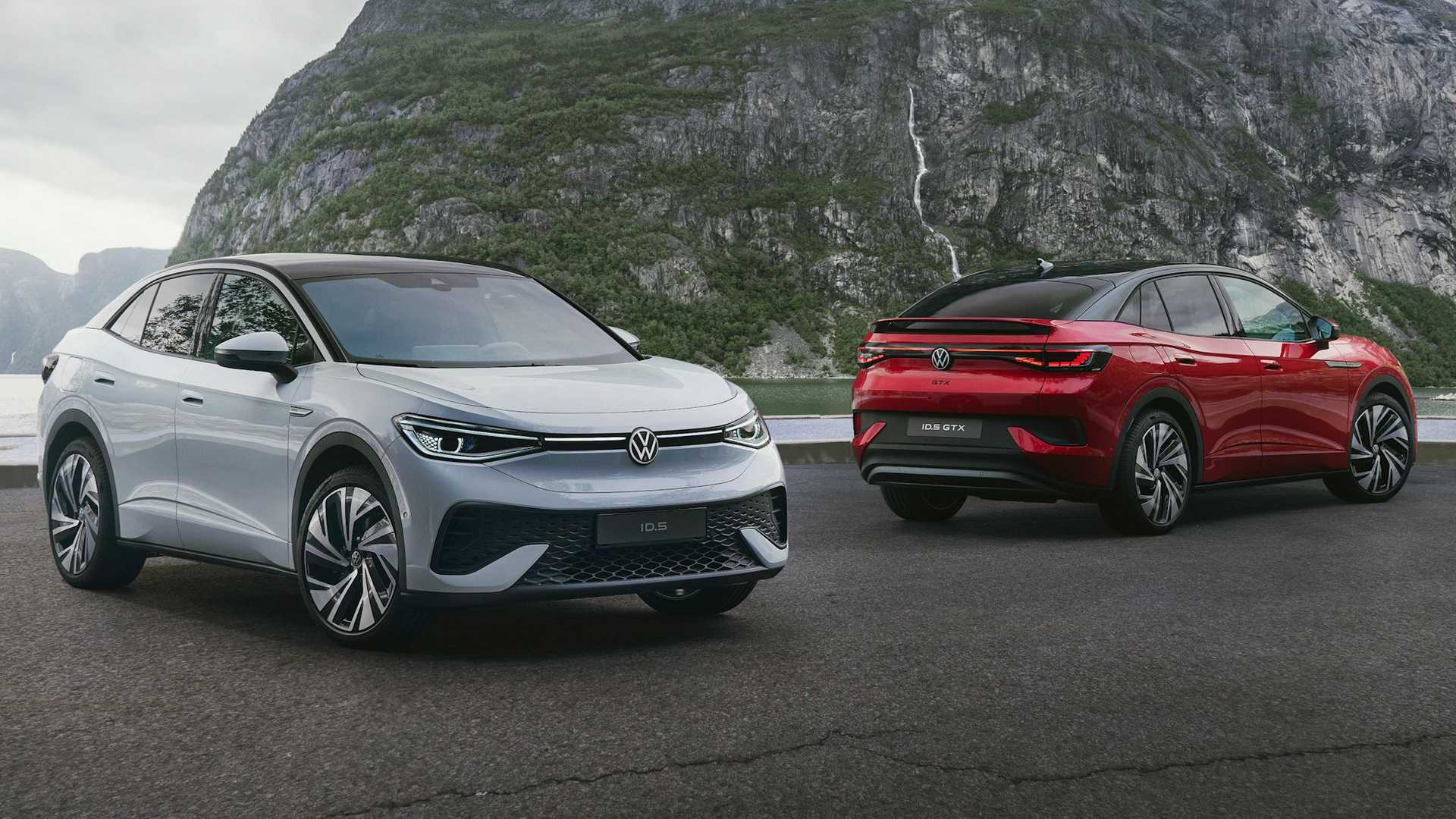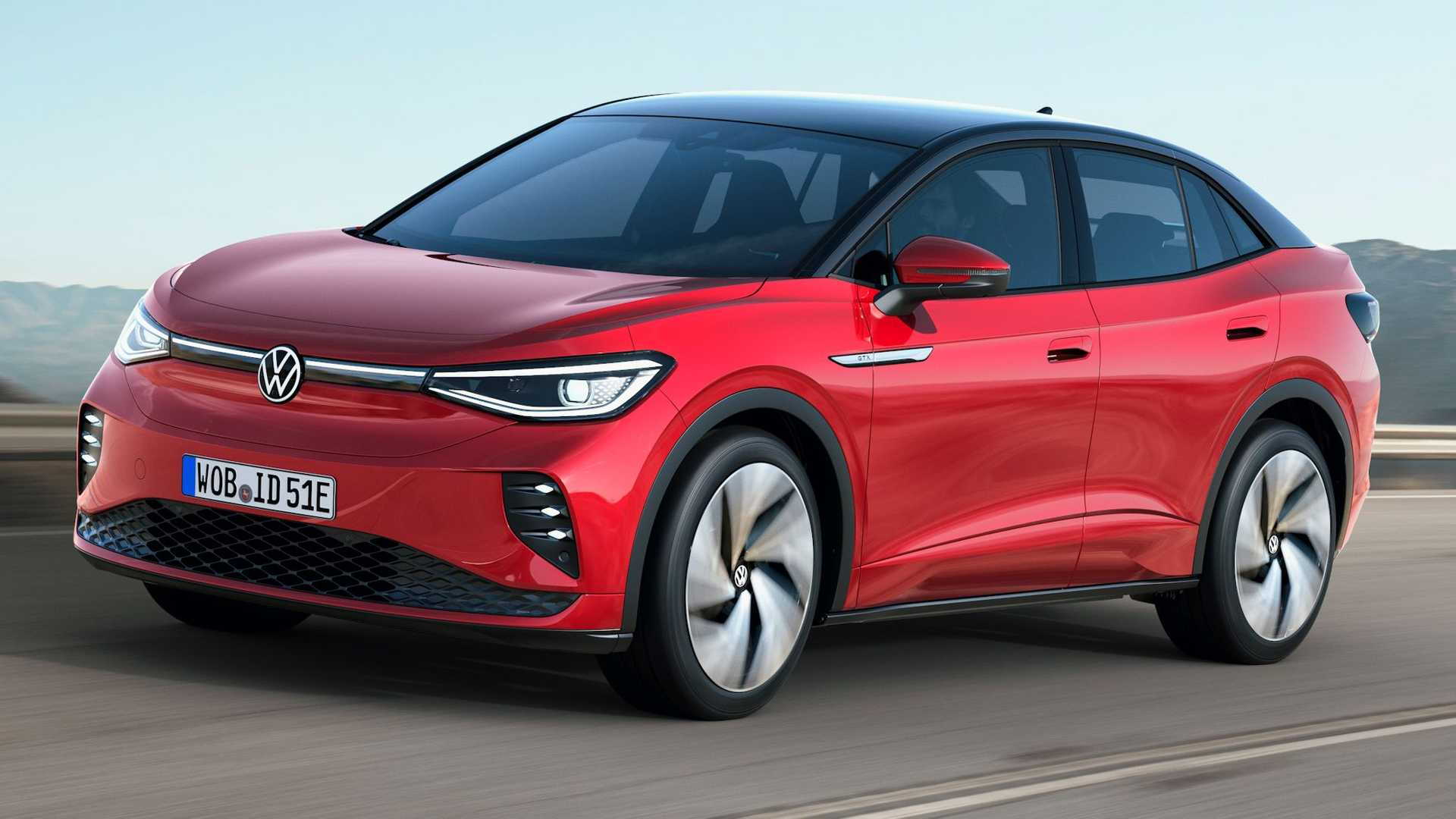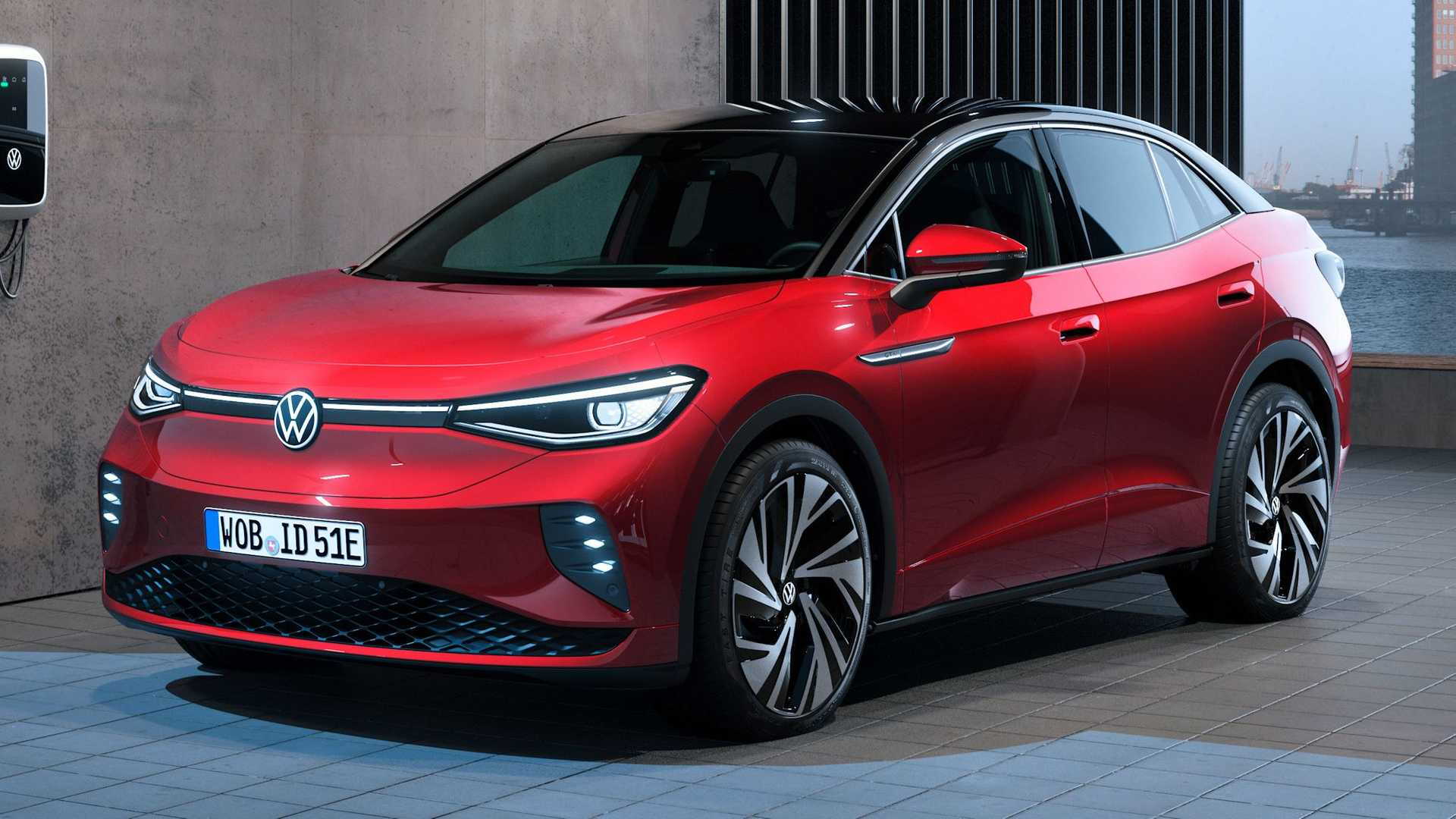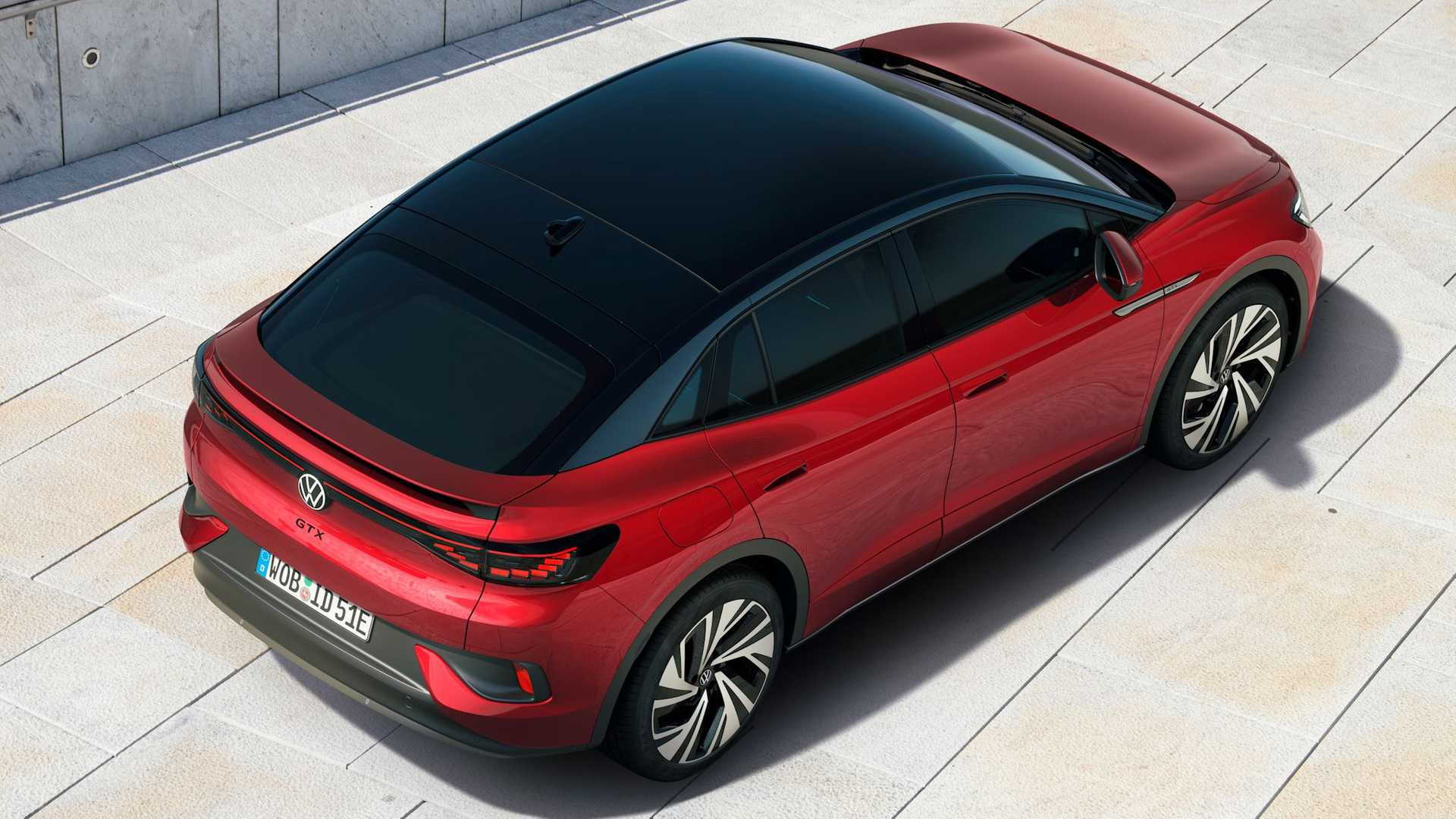Volkswagen is giving the ID.4 the crossover coupe treatment. Unveiled on Wednesday, the Volkswagen ID.5 provides European buyers the option of a sleeker electric crossover, but it's unlikely to reach the United States.
Apart from the curved roof, the ID.5 looks identical to the ID.4, and both models have a common interior design as well. The ID.5 loses about 0.5 inch of rear headroom and 10.9 cubic feet of cargo space compared to the ID.4, however.
At launch, the ID.5 will be offered with a 77-kwh battery pack and three powertrain options. Base rear-wheel drive models get a single motor producing 171 horsepower, while mid-level models get a boost to 201 hp. A 295-hp dual-motor all-wheel drive powertrain will also be available, allowing for 0-62 mph in 6.3 seconds and a top speed of over 111 mph, per VW. As with the ID.4, the all-wheel drive ID.5 will be badged GTX in some markets.

Volkswagen ID.5
VW said the ID.5 will also launch with updated software, improving charging performance and voice recognition. It also gets V2X technology that will allow cars to communicate with each other and connected infrastructure, providing drivers with early warnings of road hazards, according to VW.
Production will be handled by the same Zwickau, Germany, factory that currently builds the ID.4 and Europe-only ID.3 hatchback. U.S.-market ID.4 crossovers have been sourced from Zwickau, but local production in Chattanooga, Tennessee, is expected to come online by mid 2022.
Volkswagen of America again confirmed Wednesday that it has no U.S. plans for the ID.5, although it's hinted that both an electric sedan and a larger SUV will be among future electric offerings bound for the U.S.—plus, of course, the ID Buzz Microbus revival.
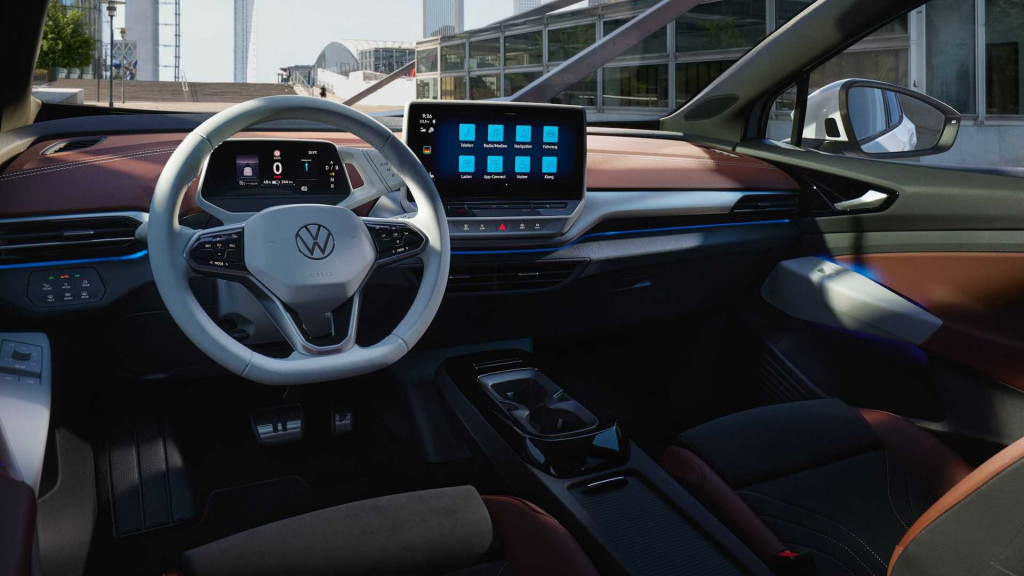
Volkswagen ID.5
The ID.5 is, like the ID.4, built on the MEB platform due to be the foundation for 15 million EVs. And with it, the ID.4/ID.5 closely parallel the Audi Q4 SUV and Sportback.
VW has positioned the ID.4 for the mass-market in the U.S. and aims to sell 500,000 of them annually (globally) by 2025.
The automaker is aiming for a single-platform approach, potentially shared with other automakers, as part of a "New Auto" strategy introduced in July.
